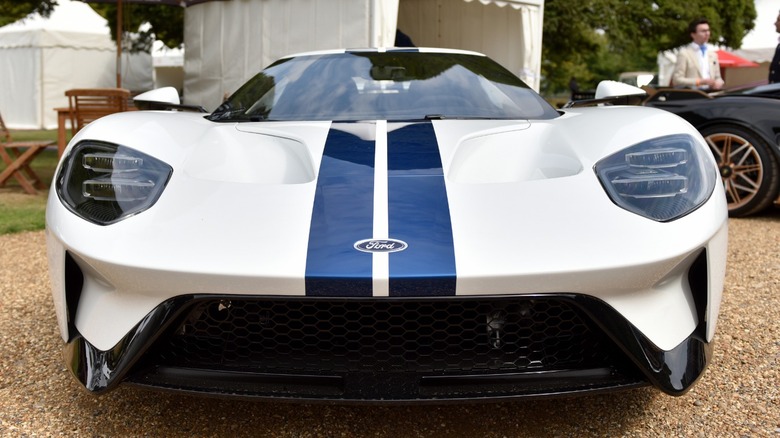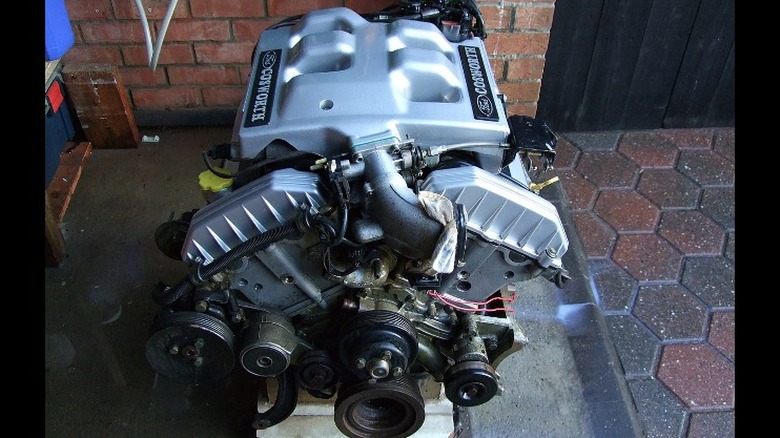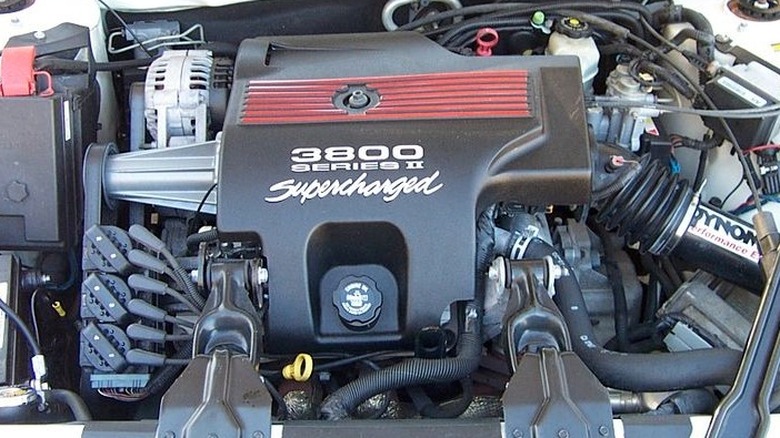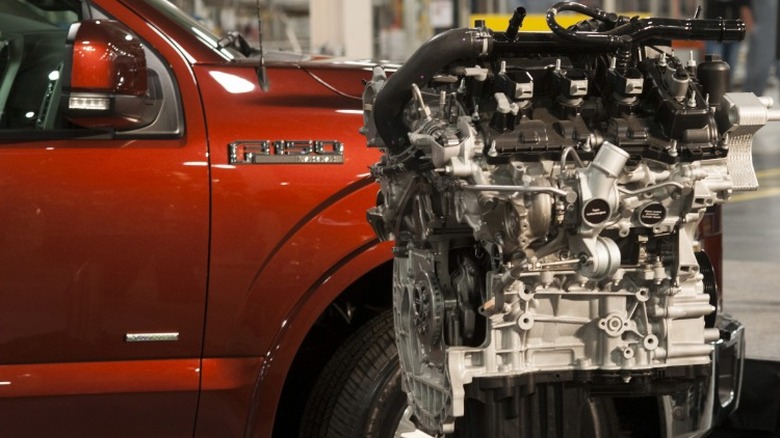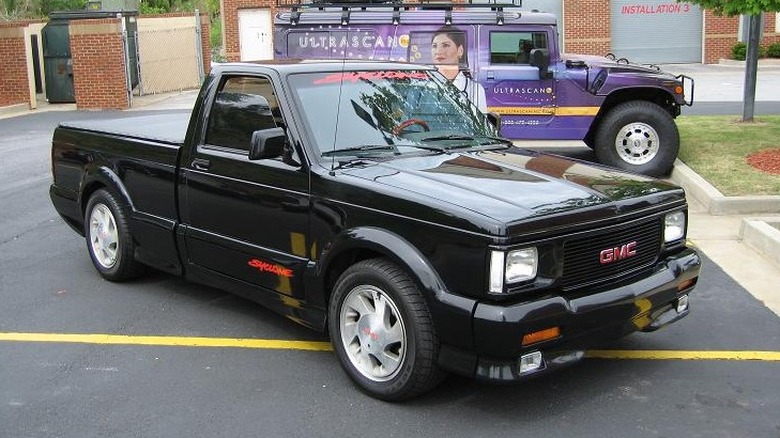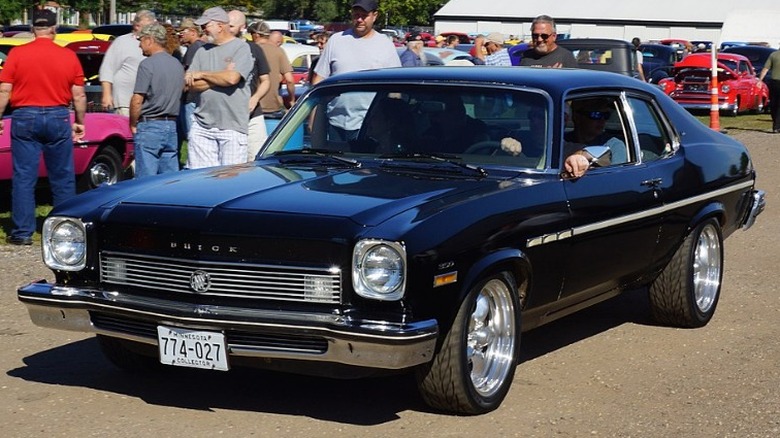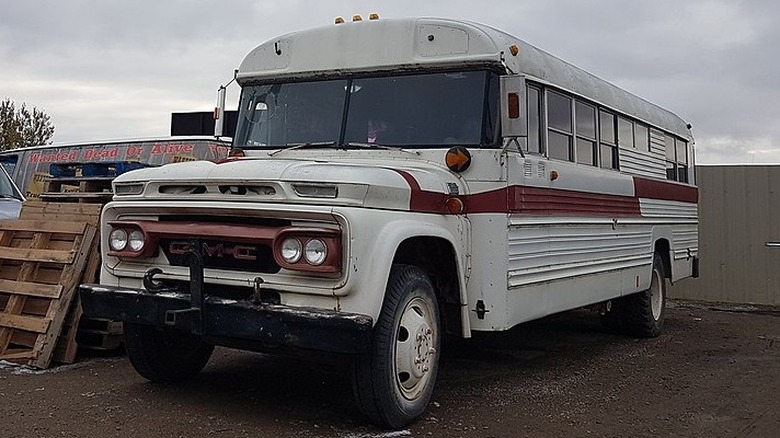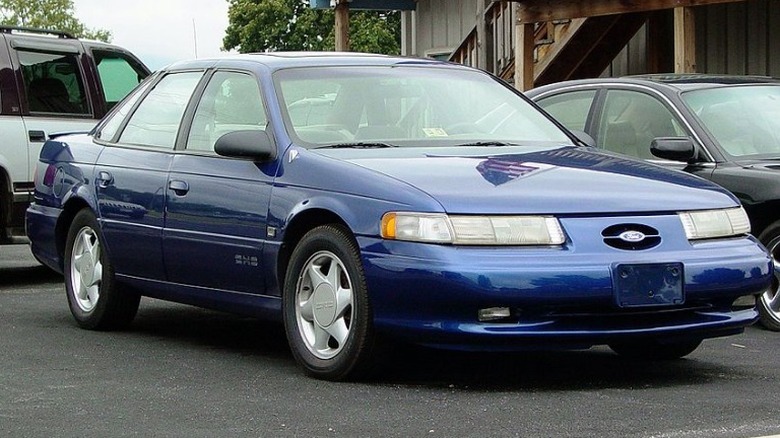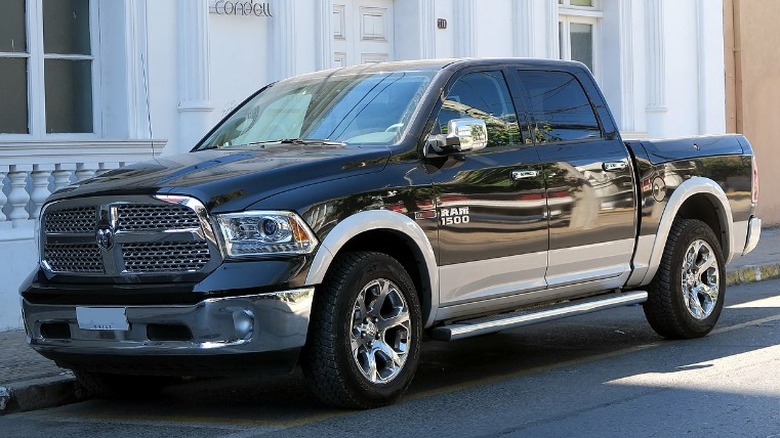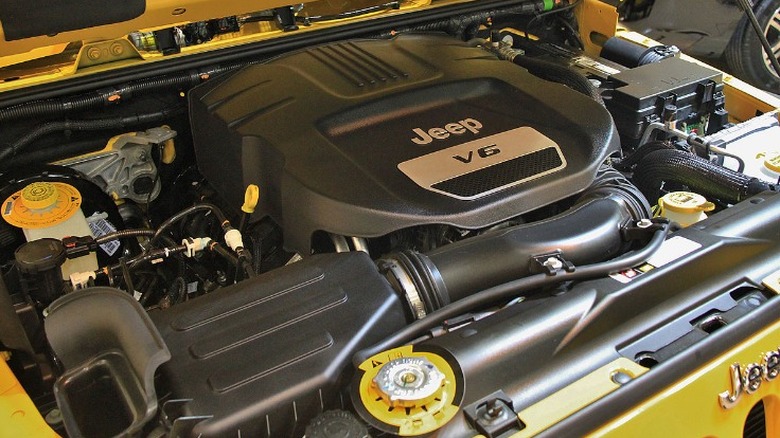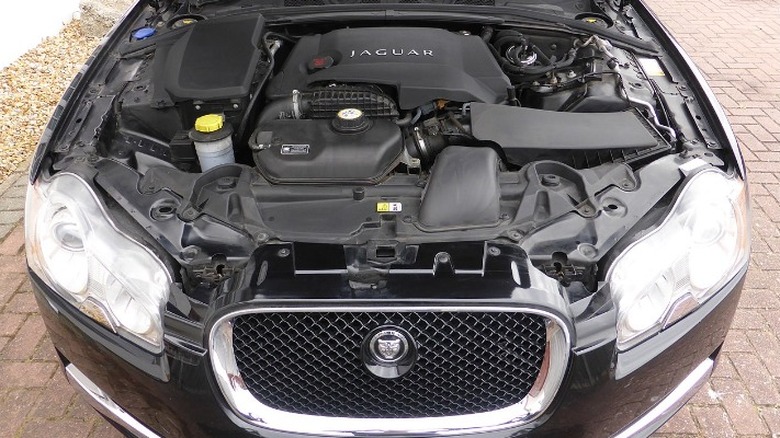The 10 Greatest American V6 Engines Ever Made
Americans have had a long love affair with the V8. The dedication to the V8 is so fervent that some car enthusiasts look down on anything with a V6 and completely shun the lowly 4-cylinder. However, over time, automakers proved the V6 could be a worthy engine, often creating powerful versions that competed with the likes of Ferrari. Through the '90s, the V6 became the prevailing choice among American car buyers, but with small turbocharged engines and battery power taking over, the days of the American V6 may be numbered. It might be wise to take a look at the best before it's too late.
6-cylinder engines have been around for almost as long as cars. Engineers figured out early on that adding cylinders was the best way to increase power. The V8 engine was also an early invention, but 6 cylinders remained lined up in a row for decades. It was in the early '50s that Lancia began toying with the V6 layout and became the first automaker to manufacture a production V6, although it only produced a few thousand copies, per Autoweek. Since then, the V6 has become the standard for automakers that need engines that offer good power while preserving acceptable fuel economy. Since the demise of American Motors Corporation, every American carmaker has offered one or more V6 engines, and these are the greatest.
Ford Cologne 4.0
Ford's European operation created one of the company's first V6 engines, but it began as a rare V4 from a German engine plant, per Car Throttle. The V4 did not last long but engineers added cylinders to make the Cologne V6, which powered Fords on both sides of the Atlantic for decades. In one of its final iterations, it grew to 4.0 liters in displacement and ferried scores of families to soccer practice and band rehearsal from under the hood of the Ford Explorer.
From 1990 to 2000, Explorers, Rangers, and Aerostars were equipped with the 90-degree overhead valve V6, which used cast-iron block and cylinder heads. This engine was built for its good low-end torque which was a bit more compact and fuel-efficient than a V8. It was perfect for light-duty application but capable of towing moderate loads as well. Wards Auto says the Cologne engine in all its forms went into 25 million vehicles over 25 years, with the final one coming off the assembly line in 2011. Although Ford engineered a new single-overhead cam version for the 2001 model year, the most units sold in the Explorer happened in 2000 with 445,157 built. While the 4.0 Cologne will never be a favorite of tuners or racers, the Euro crowd did get a Cosworth-engineered version in its 1993 Scorpio, featuring a 2.9-liter Cologne with 24 valves that produced 195 horsepower, per Curbside Classic. That was respectable power for 1993, and the Cosworth engine remains collectible today.
Buick 3800
General Motors' ubiquitous 3800 V6 came from engineering performed by the Buick division. The 3800 Series II launched in 1995, featuring tuned-port fuel injection and a balance shaft to reduce vibration, and it was good for just over 200 horsepower. Built to have good low- and mid-range torque, the 3800 was surprisingly capable of returning fuel economy of nearly 30 mpg. Consumer Guide reports that it made it to the list of Ward's 10 Best engines from 1995 to 1997, and continues to be lauded by mechanics as a "bulletproof" engine with few faults.
General Motors applied the 3800 Series II to a broad range of vehicles in every division. It could be found in Buick Lesabre, Chevrolet Monte Carlo, Oldsmobile Eighty-Eight, Pontiac Bonneville, and more. YouTuber mechanic, the Car Wizard, endorses the engine as the best engine made for the money.
Most cars with this engine are boring and practical, but a few choice models offer something extra. One perfect example is the fourth-generation Regal GS. Under the hood of this mid-size family car is a supercharged version of the 3800 good for 240 horsepower and a healthy 280 pound-feet of torque, per Dust Runner Auto. This makes the Regal GS a great example of a classic sleeper that is comfortable and reliable, and it will surprise many challengers in a straight line.
[Featured image by Digitaloutsider via Wikimedia Commons | Cropped and scaled | CC BY 2.0]
Ford 3.5 EcoBoost
A combination of forces in recent decades has forced automakers to make smaller and more efficient engines. Ford responded with the development of its EcoBoost line of engines with great success. Its turbocharged 3.5-liter EcoBoost V6 has been adopted across its range of vehicles, including the F-150 truck, replacing the V8 for many applications. Despite this effort to increase efficiency, power has actually continued to increase.
While the EcoBoost V6 can be found in an F-150 ready to haul some lumber, the best application of this block is in the updated and all-new Ford GT. Ford's historic GT40 of the 1960s was reprised in 2005 with an incredible retro-designed GT stuffed with a supercharged V8. Ford then outdid itself with the most recent iteration of its American supercar with the 2017 model, this time powered by the EcoBoost 3.5-liter V6. While the engine may have lost two cylinders, it gained two turbos and now powers this extremely lightweight car with 647 horsepower, an incredible figure for a V6 engine also found in a pickup. Though many decry the absence of a V8, we found that nothing is missing when driving the GT. Furthermore, with all of the active aero elements working to keep this car stuck to the tarmac, the compact size of the V6 allowed for more clever packaging where a V8 would be too big. Regardless of opinion, the Ford GT is currently the reigning champion of V6-powered cars, foreign or domestic.
GMC 4.3 Turbo
For much of its history, GM's dedicated truck division, GMC, largely mirrored that of Chevrolet, or it's vehicles were built to sell to project or fleet managers needing heavy equipment and trucks. That is why it was such a sensation when the truck company released a new model with acceleration to rival expensive Italian cars of its day.
GMC first produced its 4.3-liter V6 as a smaller alternative to the V8 which still offered a reasonable amount of torque and good reliability. Soon after the turbocharged Buick Grand National tore through the headlines, GMC took on a project passed over by Chevrolet involving the compact S10 pickup and a turbo V6. GMC took the turbo idea and applied it to its larger 4.3-liter V6, along with a Mitsubishi turbocharger, Garrett intercooler, and AWD. Suddenly, GMC had one of the fastest-accelerating vehicles in the world (via Motor Biscuit). With 280 horsepower and 350 pound-feet of torque, the Syclone was a little rocket. Car and Driver published an article in 1991 in which the truck was put up against a Ferrari 348ts and beat it in a quarter-mile run. Winning against a car that cost $96,000 more was an incredible accomplishment for GMC and it cemented the truck's place in automotive history.
[Featured image by Willyson via Wikimedia Commons | Cropped and scaled | CC BY 2.0]
Buick Fireball
In the early '60s, Buick created a small 215-cubic-inch V8 that never saw much use and was eventually sold to Rover. But before it let that engine go, Buick's engineers, who had been studying the Lancia V6, chose to use it as a basis for a new 6-cylinder by shaving off two cylinders, according to Hagerty. Although V6 engines are naturally unbalanced, this one was 200 pounds lighter than Chevrolet's straight-6 engine, which was a significant advantage in the compact car segment. However, not having much success with the new engine, Buick sold it to Kaiser-Jeep and it became the Dauntless V6 until the takeover by AMC.
That could have been the end of the story, but the 1973 oil crisis sent Buick scrambling for a smaller engine for the 1974 Apollo. After fitting a junkyard engine into a test model with good results, Buick bought back the tooling, which had been mothballed as Jeeps now used the AMC straight-6. The Fireball went on to become a mainstay in the Buick lineup as well as other GM division cars. It became the legendary Turbo 3.8 liter and the unkillable 3800 after further development. Buick's innovative thinking in the early '60s eventually contributed to the widespread adoption of the V6 engine in the U.S. and that is why the Fireball is kind of great.
[Featured image by Greg Gjerdingen via Wikimedia Commons | Cropped and scaled | CC BY 2.0]
GMC Big Block
Although diesel engines have been around for about as long as gasoline engines, they were mostly used for logistics in big trucks, with the first Diesel heavy truck coming from Mercedes in 1923. Thomas Built Buses says the first school bus with a diesel engine came in 1980. Before that, gasoline engines were widely used in heavy trucks, and GMC was a primary supplier of this type of vehicle.
For the 1960 model year, GMC introduced a line of V6 engines for a variety of applications. GMC had previously shared engines with Chevrolet and many other components crossed over, just as they do today. But GMC, according to Hemmings, chose to update its line of trucks with new stylings and distinct engines with lots of torque. The smallest among them was a 305 cubic inch V6, an enormous displacement for a 6-cylinder engine while the largest got up to 478 cubic inches, larger than almost any gas V8 of the day. While it produced a modest 150 horsepower, the torque rating of 270 pound-feet meant it was capable of hauling plenty of weight and was rated for up to 23,000 pounds. These low-revving engines found use on dozens of heavy-duty applications from farm trucks to school buses well into the '70s just before diesel engines became the norm.
[Featured image by dave_7 via Wikimedia Commons | Cropped and scaled | CC BY 2.0]
Ford DOHC SHO
Ford made radical changes to its lineup in the '80s, struggling to get past the difficult and turbulent years for automakers of the '70s. Many of its cars transformed into sleeker models, taking cues from European styling and perhaps the most successful of these was the Taurus mid-size sedan. It replaced boxy and dull cars replete with chrome and fat metal bumpers with a car full of curves and body color panels that was a marked departure for the company. The Taurus was a rousing success, becoming the best-selling car by 1992 with 410,000 units sold, according to the Boston Globe.
For the 1989 model year, Ford teamed up with Yamaha to create an engine to put in the Taurus, creating the ultimate sleeper car that would become a legend. When Yamaha was done with the all-aluminum Ford 3.0-liter V6, they had a 24-valve dual-overhead-cam engine that would make 220 horsepower and redline at 7,300 rpm, per Ride Apart. Further innovations seen on the engine were a dual-stage intake manifold with butterflies that opened at 3,950 rpm, boosting torque across the power curve. When the car came out, the body had also been modified a bit and received a more aggressive look, making the total package competitive with the BMW sports sedans gaming in popularity.
[Featured image by Ben Shumin via Wikimedia Commons | Cropped and scaled | CC BY-SA 2.5]
Ram EcoDiesel
Chrysler has changed hands three times since 2000. Twice it has been owned by European automakers and those companies have influenced the design and construction, with DiamlerChrysler AG developing many models based on platforms from Mercedes-Benz, such as the Chrysler 300 (via Global Policy Journal). As a result of Chrysler's current ownership under Stellantis, sharing of technology from Fiat and Alfa Romeo is integral to the brand. One high point in this relationship is the Ram EcoDiesel V6 engine.
The EcoDiesel is a 3.0-liter V6 Diesel engine, producing 260 horsepower and 480 pound-feet of torque, and has been available since 2014. Initially, the Italian-made engines from VM Motori were imported, but Ram started building them stateside in 2020, according to Motor Trend. The engine has received high praise throughout its run because it is a very powerful engine, but it also returns excellent fuel economy of more than 30 mpg on the highway and more than 20 in town. Furthermore, the 2023 Ram 1500 EcoDiesel won the 2023 Green Truck of the Year from Green Car Journal for its robust capability and ability to travel 1,000 miles between fill-ups, per Torque News. This may, however, be somewhat of a pyrrhic victory as Ram is phasing the EcoDiesel out after the 2023 model year to concentrate on electric power going forward.
[Featured image by RL GNZLZ via Wikimedia Commons | Cropped and scaled | CC BY 2.0]
Chrysler Pentastar
Chrysler phased out some older engine technology in favor of its new Pentastar V6 in 2010 and it went on to power a wide range of vehicles from passenger cars to Jeeps. It has been a good middle-ground engine offering more torque than a 4-cylinder while preserving better fuel economy than a V8. CJ Off-road lists power output ranging from 285 to 305 horsepower, depending on the application, meaning it has more than enough to adequately power all but the heaviest vehicles.
The Pentastar engine is mostly a workhorse for the company and fills the engine bay of its biggest-selling vehicles in the middle of the range, but does not produce a lot of excitement in the way that the Hellcat does. But it does deserve some attention for having received industry accolades. Shortly after its introduction, the engine landed on Ward's 10 Best Engines list for 2013, per Allpar. More recently, it was listed in Automotive World to be the best-selling engine in Canada for six years running, noting that it had been included on Ward's list a total of six times.
[Featured image byTTTNIS via Wikimedia Commons | Cropped and scaled | CC BY 2.0]
Ford Duratec
The Ford Duratec 3.0-liter engine is one of the most robust power plants the company has ever built. Throughout the '90s, American automakers transitioned from having big V8 engines as the mainstay power plants across the range to having mostly V6 engines, with 4-cylinders reserved for small cars and V8s in the largest models.
Ford created the Duratec to replace the 3.8-liter engine that was derived from an engine created in the '60s. The new Duratec featured many modern updates including dual-overhead cams, sequential multi-port fuel injection, variable intake runners, and a distributorless ignition, per Tomorrow's Tech. It is a chain-driven engine that eliminates timing belt changes and makes it durable and reliable, found in the Taurus, Edge, and even the Mazda CX-9.
Engine development originated with Mazda and Suzuki, with Porsche later offering some engineering input before it was given to Ford and Cosworth for the final version, according to Super 7th Heaven, and one of the most exciting iterations of it came in several Jaguar cars of the 2000s. In the Jaguar, the 3.0-liter engine uses four valves per cylinder with variable valve timing and unique tubing to boost power to 240 horsepower, giving the S-Type and XF models a top speed of 146 mph (via Motor-Car). This engine has since been retired, with Ford moving towards the EcoBoost model and Jaguar bought by Indian carmaker Tata in 2008.
[Featured image by Andrew Bone via Wikimedia Commons | Cropped and scaled | CC BY 2.0]
